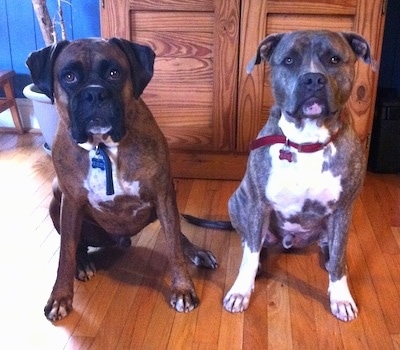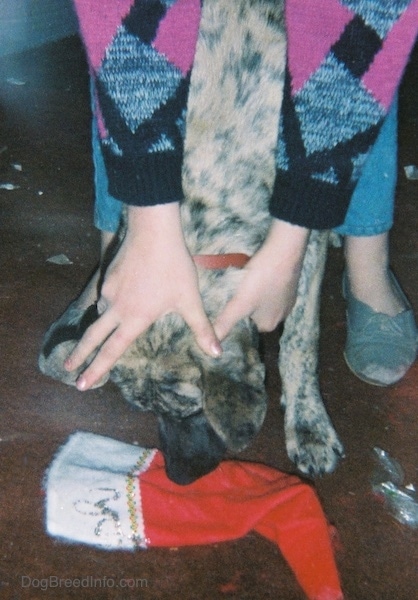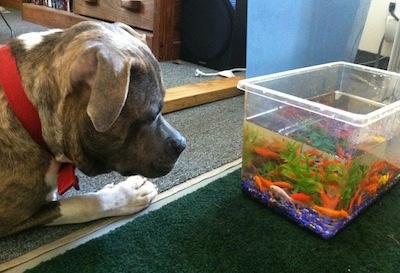
A dog should never be punished for deeds you do not like, but rather corrected. What's the difference between a punishment and a correction? A correction is when you give a command of disapproval at the moment the deed is about to be done or is being done. A punishment is anything thereafter.
For example, let’s say you have a dog that jumped through your screen. You come home to find the dog not where he is supposed to be. Believe it or not, it is too late to communicate with the dog that he should not be jumping through the screen, unless he starts to jump through again. To punish a dog for a past deed only confuses the dog, hurts the trust between owner and dog, and does not teach the dog anything useful. Dogs do not have the same sense of logic that humans have. They do not plan, premeditate or reason out situations like humans do.

The dog may start to relate that you are angry after he jumps through a screen, but he will not reason that if he just does not jump in the first place you won't get mad. He just knows you are mad after he does it. The only way to make the dog realize this is to catch him in the act.

Punishing a dog after the fact is one very good way to confuse a dog. The dog may show signs that he knows you are upset, but that does not mean he knows why. Dogs live in the moment. Whatever the dog is doing at the very second you punish him is what the dog will think is bad. If the dog is lying down on his bed when you show him displeasure, the dog will think lying on his bed is what you are upset about, or think that you are upset after he jumps, but does not associate the punishment to the act of actually jumping. Unless you catch him actually jumping or about to jump, the dog will keep jumping and keep showing signs that he knows it's bad. The dog will be missing one critical piece of information—the reasoning for the cause and effect.
Dogs react to situations. They do not think ahead or plan out bad deeds; therefore it is not necessary and even cruel to punish a dog. Dogs need corrections at the time of the deed, not punishments.
The type and intensity of correction needs to be just enough to get the dog to listen, no more or no less. If you correct your dog and the dog shakes, cowers or shows signs of any type of fear then your correction was too harsh. The intensity of the correction needs to be the same or only a tiny bit over the dog's own intensity. Anything over that is overkill and will actually do more harm than good.
If your own intensity is a lot weaker than the dog's, the dog will not listen. If your intensity is too harsh you will create problems in the dog, including fear, insecurity, confusion and a lack of trust between the dog and the human.

Dogs should never be hit. Hitting is not a natural way of communication for a dog. Dogs correct one another using body language, body blocks, verbal sounds, and bites. While it is not recommended to bite your dog, you can cup your hand to mimic a bite if the moment warrants that type of correction. Some people like to alpha roll their dogs as a correction. An alpha roll is when you make a dog lay on it's side. This type of correction is considered the ultimate punishment for a dog and should rarely, if ever, be used. When it is used it should be used with caution as you do not want to serve out the ultimate punishment for small behaviors. Also if there is any type of miscommunication between owner and dog it may confuse your dog by coming at it with such a severe reaction. Timing is very important as well. If your timing is off your dog will be confused about what it is you are not happy with.

Contrary to what some owners believe, having a human conversation with your dog does not work and neither does putting a dog in time-out. Those punishments are applying human psychology to a canine animal. Humans have to use logic when it comes to dogs, and realize dogs need dog psychology, not human psychology.
Positive reinforcement techniques are great for encouraging positive behaviors. But because a dog does not reason, plan or think logically about cause and effect the way humans do, unwanted behaviors may still need some type of correction to make the dog fully understand what it is you want or do not want of them. Dogs need both: for you to tell them “yes” with something positive as a reward, but they also sometimes need to be told "no". For example, you can use a treat as a reward for staying off the couch, but at some point you need to tell the dog not to jump on the couch in the first place.
Here is an example of a video where a Pit Bull is corrected for starting to lick a toddler. The dog could have very easily knocked the baby down. The owners wanted the dog to be able to enjoy the baby, but also learn his boundaries. In the beginning of the video you can hear a verbal correction used and watch how the dog responds to it. The intensity of the correction was just enough to make the dog listen, but not so harsh that it freaked the dog out or caused him to act out even more. The dog had a healthy reaction to the correction meaning proper communication between dog and owner was definitely present.
All the Pit Bull needed was a voice correction. The intensity of the correction matched the intensity of the dog.
It is important that dog owners learn natural dog behavior. Miscommunication runs very high between today’s dog owners and their dogs. The best way to correct a dog is to use good timing, body language and verbal sounds.
